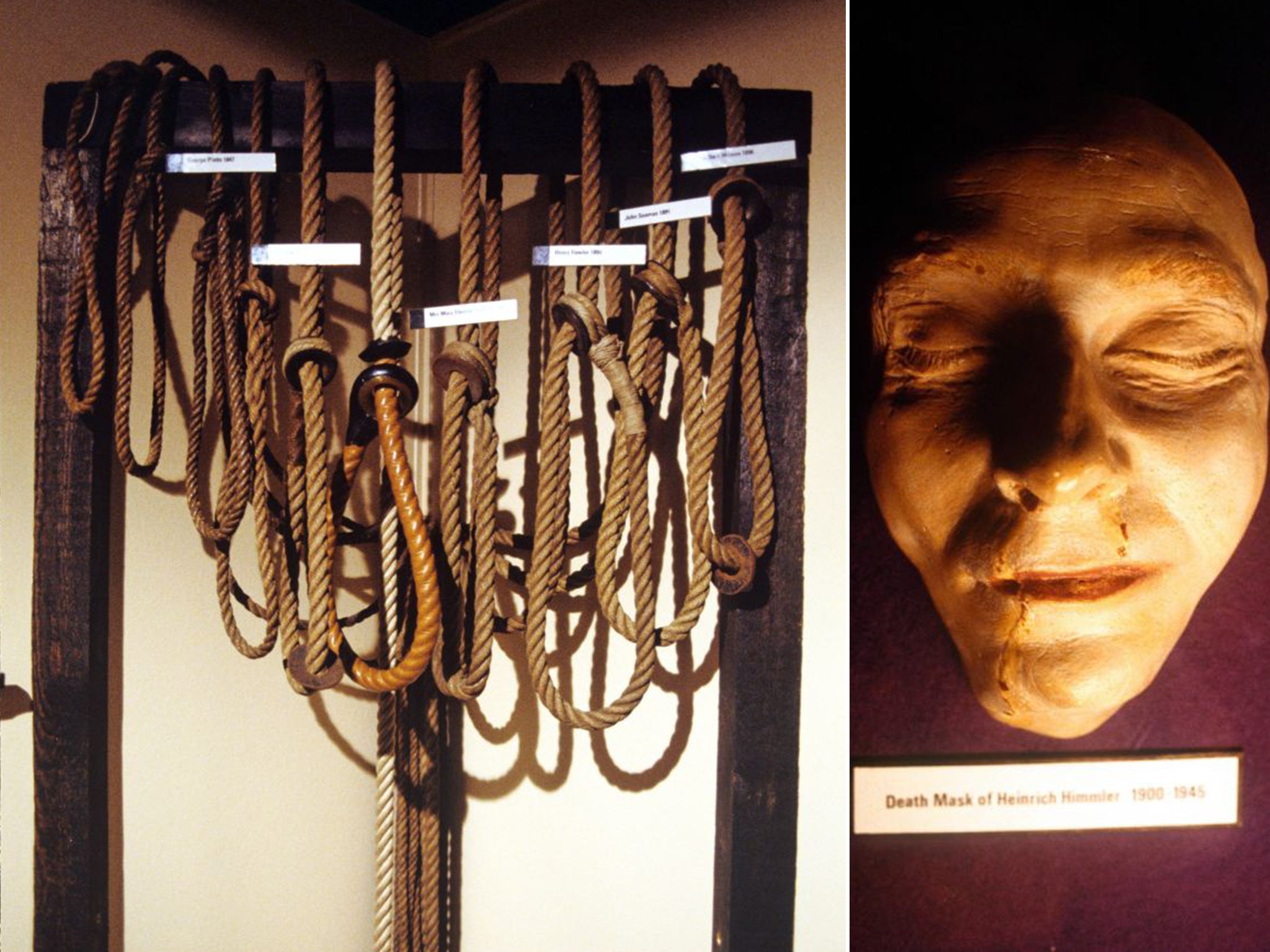The 'Black Museum': After 150 years, public set to see exhibits from police’s grisly crime museum
Mayor’s Office and Met in talks with Museum of London to display selection of its 20,000-plus exhibits

Your support helps us to tell the story
From reproductive rights to climate change to Big Tech, The Independent is on the ground when the story is developing. Whether it's investigating the financials of Elon Musk's pro-Trump PAC or producing our latest documentary, 'The A Word', which shines a light on the American women fighting for reproductive rights, we know how important it is to parse out the facts from the messaging.
At such a critical moment in US history, we need reporters on the ground. Your donation allows us to keep sending journalists to speak to both sides of the story.
The Independent is trusted by Americans across the entire political spectrum. And unlike many other quality news outlets, we choose not to lock Americans out of our reporting and analysis with paywalls. We believe quality journalism should be available to everyone, paid for by those who can afford it.
Your support makes all the difference.Grisly exhibits linked to some of Britain’s most notorious criminals are set to go on display for the first time – after years hidden away in Scotland Yard’s “Black Museum”.
The museum – which is not currently open to the public – contains items relating to some of the UK’s most infamous crimes including the pans that serial killer Dennis Nilsen used to boil his victims’ flesh.
The institution has long faced calls to open its doors, despite concerns that some of the exhibits could upset surviving relatives of victims.
A report last year called on the Metropolitan Police to open up the space, now called the Crime Museum, to the public or at least stage an exhibition, to raise funds during a period of major government cuts. Until now, only serving police officers – and some special visitors by appointment – have been allowed access.
The Independent can now reveal that the Mayor’s Office and the Met are in talks with the Museum of London to display a selection of its 20,000-plus exhibits.
Sharon Ament, director of the Museum of London, said that the history of policing in London was “fascinating topic” that would draw visitors from around the world.
Visitors, including seasoned police officers, have been known to faint on seeing some of the exhibits, which include death masks of people hanged at Newgate prison and casts of their rope-scarred necks. A request for set of fingerprints from a murderer thought to have committed suicide in Cologne in the 1950s resulted in German authorities severing his arms and returning them to central London. They are now on display, cut from the elbow down.
The museum also boasts a pommel horse that was put to alternative athletic uses at the homosexual brothel frequented by Oscar Wilde.
The Crime Museum is currently held in room 101 in the Met’s Victoria Street headquarters, its third location since first set up by an inspector in 1874. It has fallen into disuse as a training facility but senior officers are concerned at the effect of budget cuts on the museum and its fragile exhibits.
It is one of five Metropolitan Police museums, with others dedicated to the mounted branch, its archived historical collection, its Thames branch and old vehicles. Only a small part of the historical collection is currently open to the public.
“The wish is twofold: we’re obviously very proud of our history as the oldest police force in the world and to also show the role that the Metropolitan Police has played in London since 1829,” said Chief Supt Simon Ovens, chairman of the Met’s museum board.
“It’s not up to the Metropolitan Police to act as a censor but I hold very closely in mind the effect it may have on surviving family members of any part of the collection.”
Stephen Greenhalgh, deputy mayor for policing and crime, confirmed the meetings with the museum “about how the fantastic story of the Met Police can be told in their museum,” adding the talks were ongoing and they were looking for sponsorship.
Despite anticipated interest, few exhibitions make money and no decision has yet been made whether visitors will be charged to see the planned exhibition. Curators are currently visiting the historical sites to identify the items they want to display. Officials will then discuss the ethical considerations of putting them on show.
Join our commenting forum
Join thought-provoking conversations, follow other Independent readers and see their replies
Comments